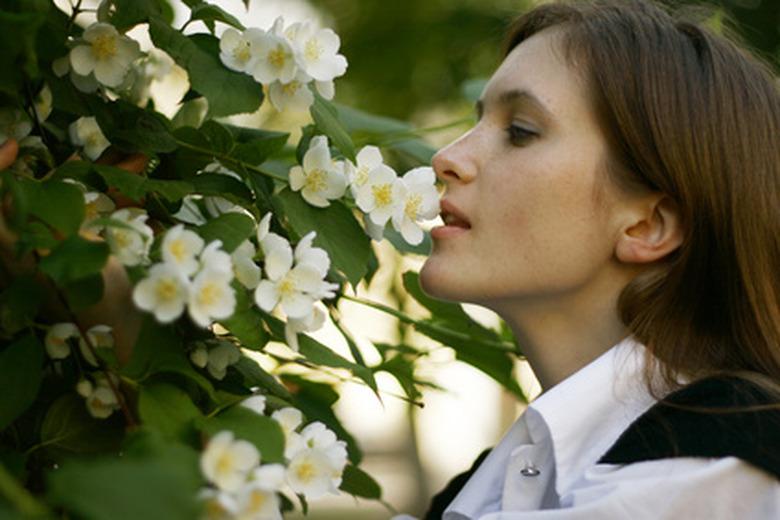How To Dry Jasmine Flowers
Things Needed
-
Stalks of jasmine buds
-
Twine
-
Eye hooks
-
Garden cart
True Jasmine plants are native to tropic and warm temperate regions. Over 200 varieties have been cultivated to ensure jasmine can grow in various weather elements, although this delicate climbing shrub will freeze in sustained temperatures below 32 degrees Fahrenheit. Dried Arabian jasmine is used to flavor tea or for making potpourri. The delicate, fragrant flowers are also used as an antiseptic, anti-spasmodic, sedative and to treat depression. If you have ever purchased jasmine rice, you have realized the powerful effect of aromatherapy. Jasmine flowers are valued for the essential oil used in soaps, perfumes and lotions.
Step 1
Identify your jasmine shrub carefully due to the poisonous varieties available. Choosing a variety will depend upon your purpose for using and drying the flowers and leaves.
Step 2
Harvest flowers in the early morning when the flowers are tightly closed. Cut small branches with many buds and tie the stems of three or four together with twine. Carefully lay the branches in a garden cart as you work.
Step 3
Hang the branches in a cool, dry place such as the high ceiling of a barn, a room in your house, your attic, or any place that is free from moisture and heat. Prevent mildew from growing and ruining your dried flowers by hanging them in temperature-controlled spaces.
Step 4
Dry your flowers for four to six weeks. Once they are thoroughly dry, use them in potpourri, to flavor teas, or make sachets. Use the flowers and the leaves, as both are rich in fragrance.
Tip
According to Pure-incense, jasmine used in aromatherapy treats nerve conditions. Jasmine tisane or Jasmine sambac are two varieties used for flavoring teas.
Warning
Make sure you are not growing a poisonous variety before using the flowers to flavor tea or make tinctures or tonics.




